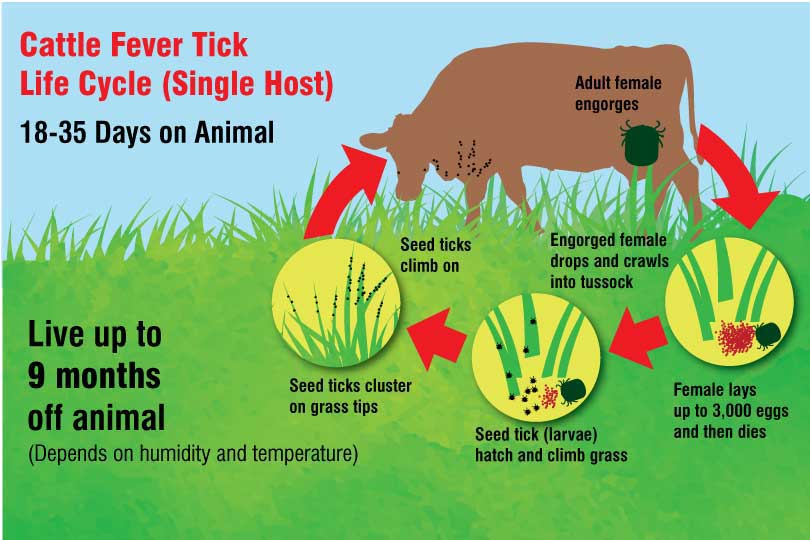By Julie Tomascik
Editor
Texas cattlemen have received an additional $3.7 million in federal aid to bolster efforts in the cattle fever tick permanent quarantine zone along the Texas-Mexico border.
This will be added to the $8.5 million already allocated for 2017, bringing the total to $12.2 million.
The funding comes in response to requests for more assistance by Gov. Greg Abbott and Texas congressional representatives Vicente Gonzalez, Filemon Vela and Henry Cuellar.
“The cattle fever tick and the disease it carries has the capability to cripple the Texas cattle industry if it’s not contained, and Texas ranchers are facing an infestation of fever ticks not seen in decades,” Texas Farm Bureau President Russell Boening said. “Fighting fever ticks is an ongoing effort and these additional funds are another step in a long journey to push the pest out of the U.S.”
Federal programs along the Rio Grande River have been in effect for many decades, and they serve to prevent additional ticks from crossing the border into Texas.
The ticks are capable of carrying and transferring a disease commonly known as cattle fever, which can kill up to 90 percent of those infected.
Wildlife such as whitetail deer and the exotic Nilgai antelope are suitable hosts and are a constant challenge in controlling the population on Texas ranches.
That has cattlemen worried about the newest outbreak located eight miles outside the permanent quarantine zone in Webb and Zapata counties.
Texas Animal Health Commission (TAHC) officials confirmed the identification of cattle fever ticks during a voluntary inspection of a ranch.
The agency, in coordination with the U.S. Department of Agriculture, has mapped a control purpose quarantine zone around the infected ranch and have begun systematic inspection and treatments to eradicate the pest.
Those eradication strategies may become more achievable with recent changes to state cattle fever tick rules and regulations.
TAHC adopted a new rule during a meeting on May 9 that gives the state agency more options on gathering cattle, inspection and treatment for ranches when previous rules were not achievable.
The rule allows the TAHC executive director and designated fever tick epidemiologist to approve inspections, dipping, treatments or vaccination requirements that are less stringent than the current process.
“Our goal is eradication of cattle fever ticks, and biology of the tick allows no shortcuts to reaching that goal,” Dr. Andy Schwartz, TAHC executive director, said. “Cattle maintained on or near premises have significant value as sentinel animals, and when found, become control agents of the fever tick. This rule change allows us to consider the rancher’s particular circumstances in developing a science-based plan encouraging continued stocking with cattle while ticks are eradicated.”
The amendment will go into effect May 30.
There are about 1.4 million acres under various types of fever tick quarantines outside of the Permanent Quarantine Zone. To learn more about the areas, visit http://www.tahc.texas.gov/animal_health/cattle/#ticks.

